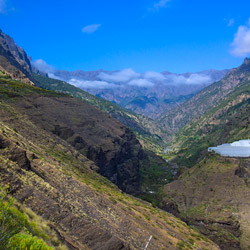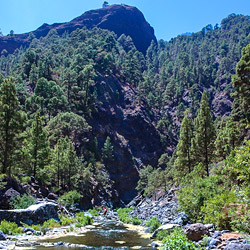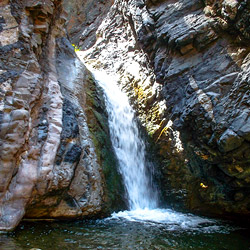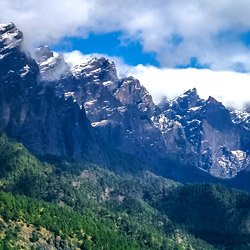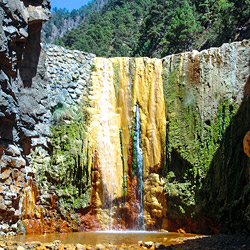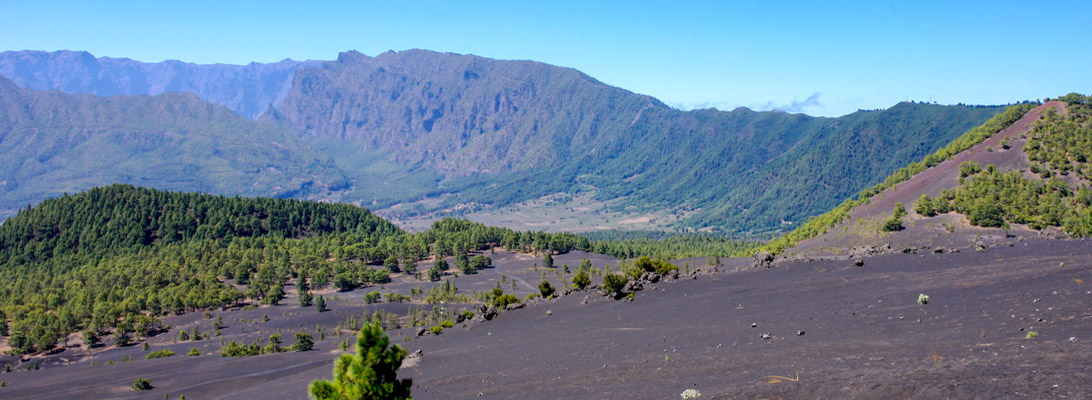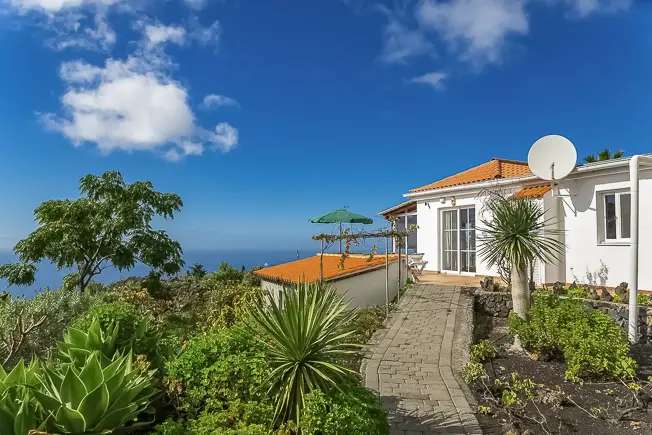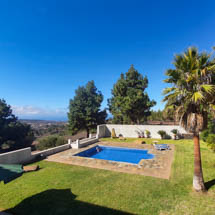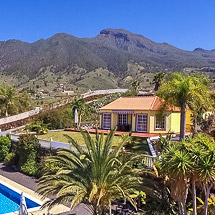La Palmas Caldera de Taburiente is a landscape that the director of a dinosaur film could have imagined. The huge basin, nine kilometers in diameter, which has been protected for over 50 years, with its fragrant pine forests, murmuring headwaters and towering rock needles, is dominated almost all around by over 2,000 meters high, fissured rocks, over which clouds often "flow". Inside it, hikers will find paths and a simple campsite, no settlements or fields. Who dares to enter, must leave the cauldron at the latest the next day again.
Highlights like the Guanches volcanic chimney Roque Idafe or the colorful waterfalls are bathed by the Caldera in a mythical light. They will not reveal their last secrets so quickly. Off the hiking trails, nature conservation requirements prohibit further exploration of this unique landscape. Here live the Caldera crow, as well as other birds and hares. In administrative terms, this unique natural monument belongs to the community of El Paso.
Hiking in the Caldera - beautiful, wild, dangerous
The danger of a weather change can make the cauldron a quick trap for hikers. In 2001 three people died after torrential rain in the Caldera and the "Barranco de las Angustias". Historically, the "Barranco de las Angustias" played an important role in the conquest of La Palma. At that time, the bay of Puerto de Tazacorte offered the Spaniards the only possibility to anchor off La Palma. Accordingly, they began the land seizure from there by the Barranco de las Angustias. The failure of the Hernán Peraza troops was due to the boulders pushed down by the Guanches from the edge of the gorge. Since then the Spaniards have called this gorge "the gorge of fears". It took more than 50 years until another attempt at conquest, this time based on treason, was successful.







